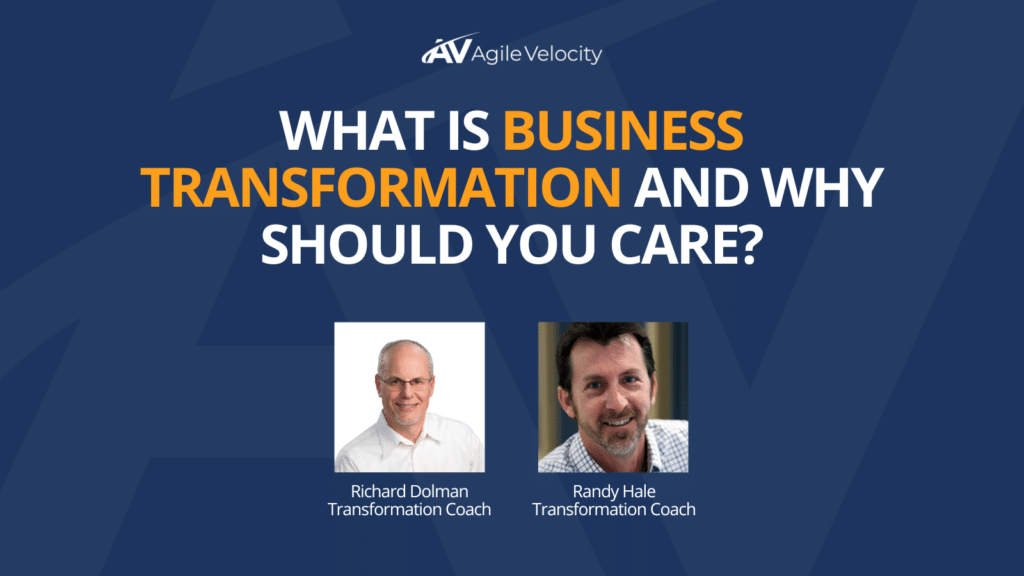Unpacking Business Agility

I recently had the pleasure of having a conversation with Pam Ashby, a strategist at the Agile Business Consortium, to explore the world of Business Agility. Business Agility is a topic that’s been gaining momentum and for a good reason. In our fast-paced, ever-changing world, organizations must be able to adapt and, stay customer-centric to […]
Kanban and SAFe®: BFFs? Exploring Kanban, Scaling, and Lean-Agile Frameworks

I recently had the opportunity to listen in during a LinkedIn/YouTube Live conversation between my fellow AV Transformation Coach Colleen Johnson and Roger Turnau, both seasoned Lean-Agile practitioners. Their discussion touched on various facets of Lean-Agile coaching methodologies, including visualizing working on Kanban boards and the challenges of scaling Agile in larger organizations. As they […]
6 Key Challenges of Agile Transformation in a Hybrid Environment and 8 Strategies to Overcome Them

As the pace of change continues to accelerate, embracing agility – the ability to turn on a dime for a dime – has become a key to ongoing success for many organizations. Agile practices, like Scrum and Kanban, initially developed for software development, are now being embraced across all departments and functional areas including marketing, […]
How to use Flow Metrics to Manage the Madness and Drive Action [Video]

In this quick video, Enterprise Coaches Colleen Johnson and Andy Cleff discuss… The right way to use flow metrics Difference between leading and lagging indicators 4 metrics + 1 bonus to help you measure flow at the team, system, and portfolio level If you’d like to learn more about Flow Metrics, contact us.. Flow […]
Is SAFe® More Complex Than it Needs to Be?

Some people look at SAFe® and they say a couple of things. They say, “Wow, that is really complex, and it has a lot of rules.” And then they kind of dismiss the whole framework because of that. Some even use the word “rigid.” But those of us who have been on the inside […]
Video: Mission Possible – Agile Predictability

According to the 16th annual State of Agile report, 44% of respondents reported that achieving predictability is how they prioritized the implementation of Agile ways of working. This was the #2 reason. Yet, it’s common to hear that you can’t have fixed delivery dates in this type of environment. What gives? Enterprise Coaches Colleen Johnson […]
Video: What is Business Transformation and Why Should You Care?

There’s a lot of chatter about transformation….possibly because the entire world just got through (still going through, processing, reeling from?) a pandemic. We saw first-hand just how important agility is when reacting to massive disruption. However, an organization’s ability to be nimble is just as important when the landscape is steady. One way for organizations […]
Keeping Austin Agile at Agile City Limits 2022

We had so much fun at Keep Austin Agile this week! We hosted Agile City Limits with a special guest-star appearance from Mathew McCut-out. Some might say it was alright alright alright… At Agile Velocity, we focus on business outcomes over practices. From our experience, transformations are most successful when aligned around a compelling purpose […]
What’s the Secret to Maximizing the Value out of Agile PI Planning–Whether You’re In Person or Online

The second article of this series talked about success criteria and how to facilitate the voting process. This time, we talk about a critical aspect of PI Planning. Whether onsite or online, how do you make this event valuable and fun. We’ve talked about how the social aspect of PI Planning is really important and […]
How to Facilitate a Successful PI Planning Agenda

In the last article, we talked about why PI Planning is so “magical” and how to prepare (there’s an art) for PI Planning. We continue the conversation with Enterprise Transformation Coach David Gipp and dive into the PI Planning agenda, how it’s similar to other Agile events, facilitating for the best outcomes, and if SAFe […]
